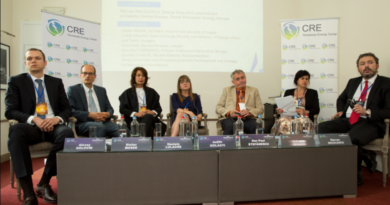The successful textile reindustrialization in a country of sailors
“Our day to day life is not easy. We work in the most difficult of industries. To succeed you must believe and have a great will to win. We do it and we are proud of it,” said Paulo Melo, President of the Textile and Clothing Association of Portugal.
At the turn of the century, Europeans looked to China as the world’s factory and dreamed of the Old Continent to live comfortably at the expense of services, in a clean environment, finally free from the pollution and the traditional industry. But somewhere in the North of Portugal, an irreducible group of textile manufacturers decided to resist, to the mermaids of Brussels and Lisbon, while struggling to keep their factories working.
It was not easy to continue to navigate the stormy sea that followed the dismantling of the Multifibre Agreement and the accession of Asian countries to the WTO. There were many companies that did not survived and inevitably drowned. However, against the winds and tides, the essence of the Portuguese textile fleet overcame the Cape Storm, turning it into the Cape of Good Hope and finally managed to reach a good port – with all statistics (production, export, employment and added value) registering a clear and consistent upward trajectory in the last five years.
Well seen things, maybe it was not a surprise because Portugal was always a country of sailors.
“During the crisis years, when many companies disappeared, my biggest fear was that our textile and clothing industry would lose the critical mass needed to attract the brands to come and make their collections. Fortunately, we managed to keep the supply of a set of specialties that focused on the movement of customers to our country, concentrated in a 50 kilometres radius,” said Manuel Gonçalves, a member of the Cluster Textile Board – a group of companies, universities and technology centers – and administrator of one of the most powerful and traditional Portuguese textile groups founded 80 years ago by his grandfather.
The trip was harsh. The survival was a complete reconversion of the business model, made in progress by an industry that was accustomed to use the price as an asset. In order to keep its head out of water, they had to quickly re-equip and reinvent their value chain – and become attractive for its quality, secular know-how, innovation, location, flexibility and reactivity.
It is certain that in the final part of the voyage, the sea began to calm down and the strong winds started to blow in favor. The pace of fashion began to accelerate in such a way that the capacity of producing small series in incredibly short timeframes has made the Portuguese textile industry even sexier in the eyes of buyers from major world brands.
There are countless signs that prove the success of the extraordinary capacity for survival and adaptation of the Portuguese textile industry – which most believers do not hesitate to call a miracle.
In 2016, Portuguese textile exports surpassed the five billion euro barrier, hitting a record since 2001, when the sector had twice as much business and employment. A record that is going to be beaten again in 2017, with a progression of 4%, well above the 2.5% estimated for national GDP growth.




